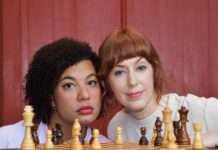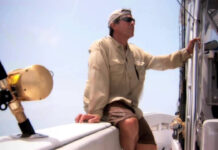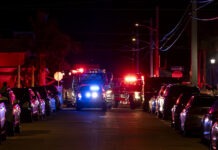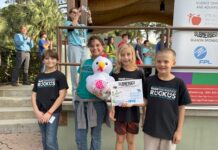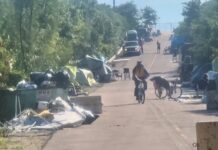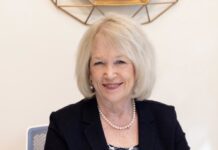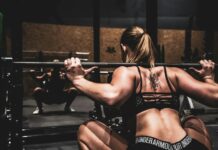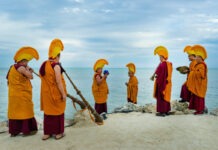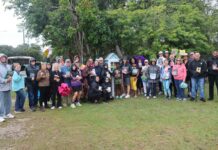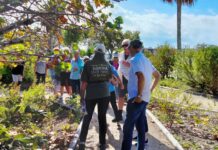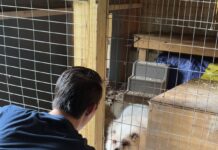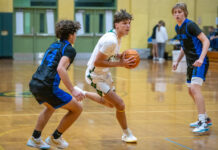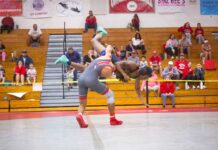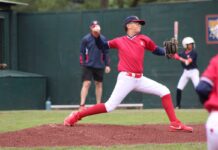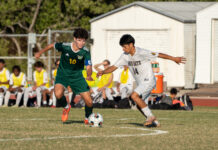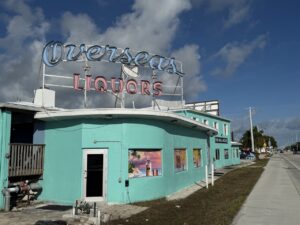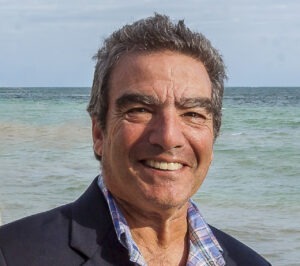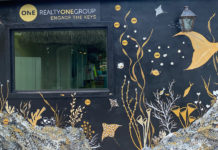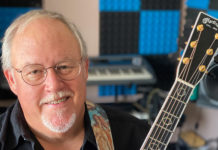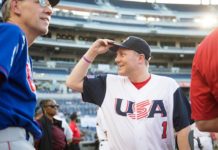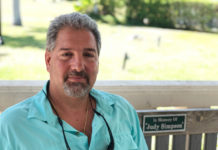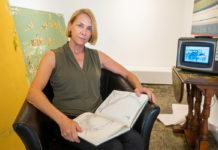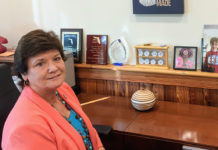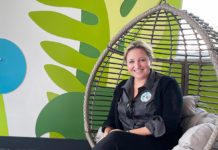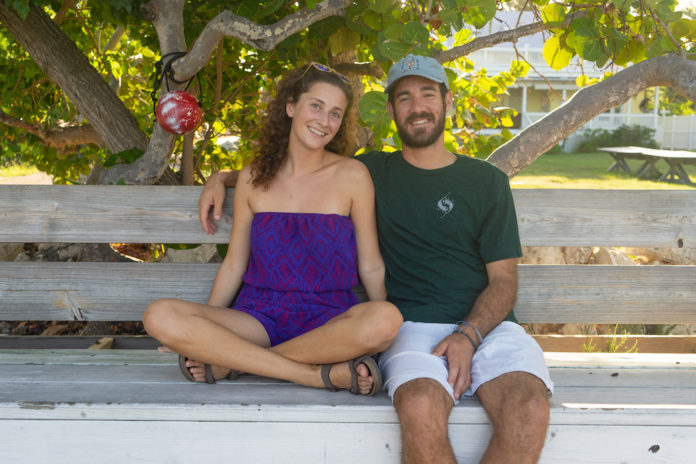
Victoria Cassar and Ian Wilson-Navarro create art that sparks conversations about nature and how to protect it. The couple uses different mediums — sculpture for Cassar and photography for Wilson-Navarro — that complement each other’s work. The pair live in Tavernier and use their home base in the Keys to create art that spreads awareness and moves people.
At the University of Vermont, Cassar double majored in studio art and environmental studies, using art to advocate for sustainability and conservation. She got involved with plastic pollution, deciding one day to fully quit single-use plastics “cold turkey.” Cassar explains, “It doesn’t mean I’m perfect all the time, but I’ve worked really hard to minimize my single use plastic consumption as much as possible. I think it’s really cool that you can quit plastics just like that since many single-use plastics aren’t necessary for a majority of people.”
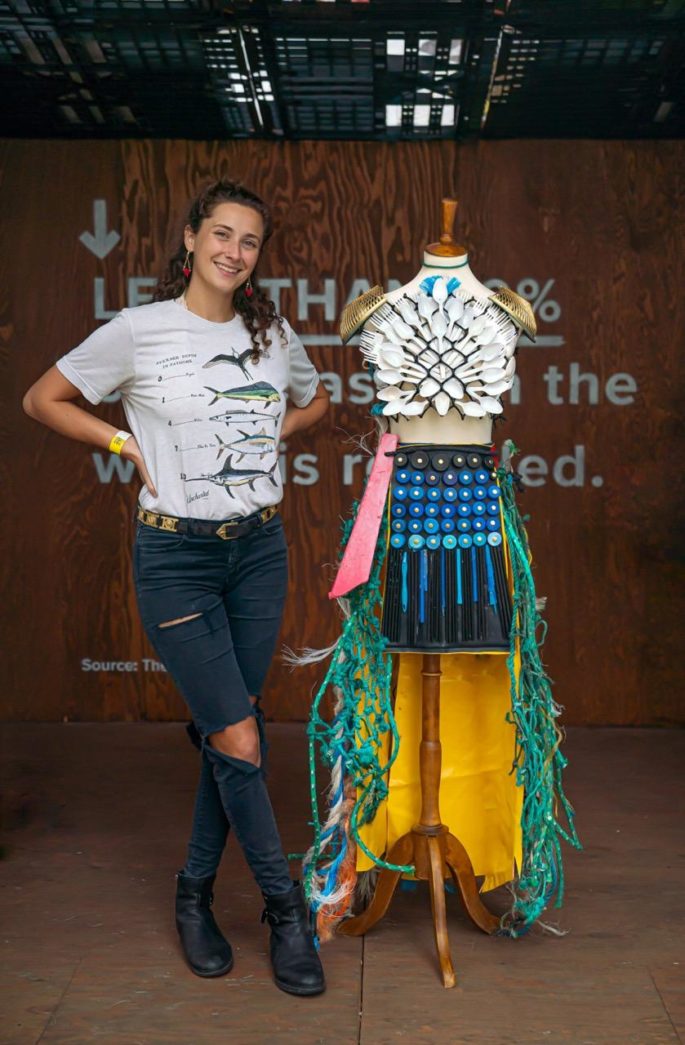
Cassar uses these same pesky single-use plastics in her work, creating three- dimensional art and jewelry from reclaimed materials. By “redesigning excess,” Cassar raises awareness around issues that matter to her: extinction, plastic pollution, and invasive species. She recently was invited by Keen to exhibit in their Denver, CO art gallery “Art as a Catalyst for Change: Visualizing the Single Use Plastics Issue.” Her works communicate the importance of protecting wildlife through collective, conscientious decision-making.
While Cassar uses man-made elements to convey messages of environmental protection, Wilson-Navarro instead focuses on creating images of pristine environments and sustainable ways to interact with them. He’s a self-taught photographer with expertise capturing lifestyle, adventure, fish, and surf. After graduating from Coral Shores High School, Wilson-Navarro honed his craft as a first assistant to professional photographer Mark McInnis, a renowned commercial and surf photographer based on the west coast. He’s traveled across the globe documenting surf, fishing, oceans, and other coastal environments. His works often include wildlife as well as people interacting in these wild places. He intentionally incorporates people in scenes of wilderness and oceans to emphasize the relationship between humans and nature. Wilson-Navarro wants his work to inspire people to get outdoors and connect with nature.
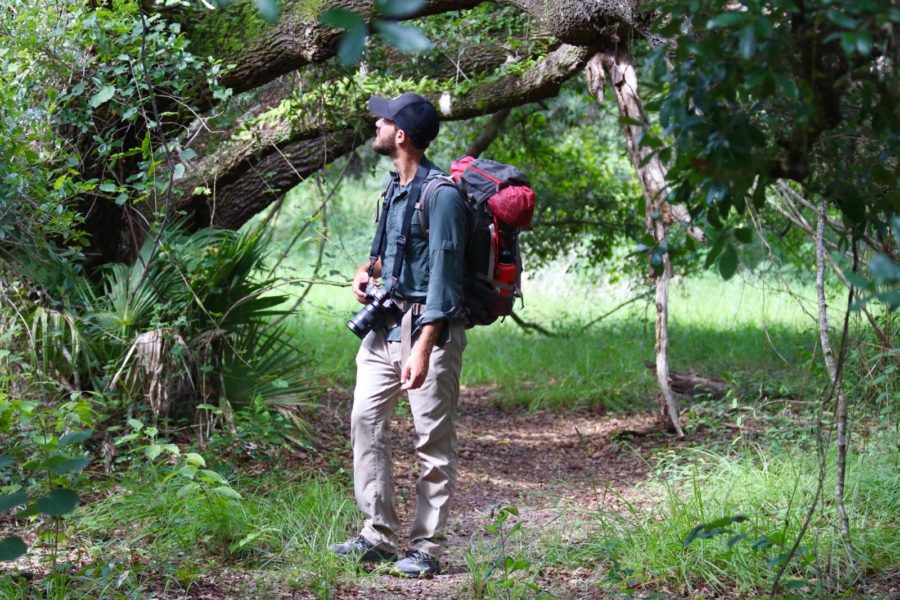
The Keys have been instrumental in the development of both artists’ signature styles. Cassar, originally from New York, moved to the Keys for an internship at Coral Restoration Foundation. Through presentations for CRF, she quickly learned how effective educating the younger generation can be. “They retain so much information. I definitely want to incorporate education into my future endeavors so people leave my events and workshops ready to create change.” Thus, Cassar has broadened her focus to include cleanups, which provide raw materials for many of her sculptures and Zero Waste workshops to help teach others in the community how to make more sustainable choices in their day-to-day lives.
Wilson-Navarro is a born and raised Conch. He credits his surroundings and his family with growing his interest in documenting nature, its wildlife, and the people who enjoy it. “Growing up in the Keys, I was constantly reminded not to take it for granted. There were people — my parents especially — who reminded me how lucky we are to live in a place like this. So, I was instilled with a love for the environment I grew up in, which led me to a broader appreciation of nature in general,” says Wilson-Navarro.
He especially recalls spending his weekends at Molasses Reef, fishing with his dad for mahi offshore. This innate, inherited appreciation for the ocean and its bounty are apparent in Wilson-Navarro’s work. His comfort in the surf and his knowledge of boats and fishermen allow him to articulate intimate connections between the coastal ecosystem and the people living and working in it. He’s recently added conservation filmmaking to his repertoire with a three-part documentary on the ecological importance of prescribed fires in the Everglades. “I want to show people how prescribed fires can be used to combat the ever-growing wildfire season. It’s really interesting, really important work that the Everglades Prescribed Fire Department is doing.”
Most importantly, the couple use their lives in the Keys to witness and express the changes they’re seeing in the environment: the amount of boats, the influx of people, the lack of fish, and the degrading reef. Wilson-Navarro notes, “Just being here to witness the change first hand made me realize what was going on. Moments like these, I do not take for granted. And, I want to help create change.” Cassar agrees, changing lifestyle “might require a little self discipline and thinking ahead, but it’s totally possible.”
To contact the couple and to view their work, please visit victoriacassar.com and ianwilsonmedia.com.
Full name? Nickname?
V: Victoria Emilie Cassar. Nickname Vic.
I: Ian David Wilson-Navarro. The Navarro sends for my mom’s name. My friends call me “EEaaaaan” (like Ian, but with a Spanish accent, like how my mom used to call me from my living room).
Where did you grow up?
V: New Rochelle, NY, which is a suburb of New York City.
I: Port Largo, mm100. Bahama Ave.
How did you meet? How long have you been dating?
V: Ladies’ night at Big Chill. We don’t go as often anymore because they use way too much plastic. Fin & Juice is our new spot.
I: Ladies’ night at Big Chill. Year and a half.
What’s something people don’t know about the other?
V: That Ian practices his breath hold in every possible environment, including bathtubs, jacuzzis, and pools. Also, he’s obsessed with bread.
I: That she was a windsurf instructor in Burlington, VT on Lake Champlain.
What’s a ‘locals only’ secret about life in the Keys that you’re willing to share.
V: There’s a kind of dirt path at the end of the Bird Center that’s really beautiful and provides views of the bayside with clear water. It’s just really nice to hike through, but there’s a lotta spider webs.
I: I’d say Dove Creek. It can be a little buggy. It’s like a wildlife area. There’s a lagoon there. They do dive courses now, and there’s tarpon that live there. It’s a unique environment; it’s in the tidal flow. There’s trails you can hike.
You guys do clean ups and other conservation events. What’s the strangest thing you’ve found during one of your clean ups?
V: A few things that come to mind. A Japanese water bottle, and recently we found a really big sunbrella stuck high up in the mangroves.
I: The strangest things are the little yellow vinegar bottles from the Caribbean. It’s always the same bottle and says ‘vinegar’ in spanish. I’ve been seeing them since I was a kid.
What’s the first thing you do when you wake up?
V: Snooze.
I: Go on my phone. Or stand up and take a cold shower if I’m in a good routine.
What’s your idea of the perfect weekend?
V: Oooh, camping in the Everglades. Or, and I think this is true for both of us, getting out on the skiff and exploring a bunch of little mangrove islands as far away as possible. Taking photos of birds.
I: Just a glassy day on the water in the company of good people. And cold drinks.
Did you always want to be an artist? What drew you in?
V: Yes, definitely. It was always a feeling of having to create art about issues I learned about. The summer when I was visiting family in France, and I found a notebook with a self-portrait I’d made of myself as a little girl stick figure scuba diving in the ocean. There was also a photocopy of an article about me and my friends making bead bracelets. We sold them and made $120 and donated them to my neighbor who’s house had burnt down.
I: No, but I always knew I wanted to do something different than the normal trajectory. In high school, I was pretty set on not going to college immediately after. I was a horrible student — lost in my head, daydreamer, thinking about exploring far flung locales. My passion for surfing led me to photography. What pushed me to create was the opportunity to maintain memories: I love having something to look back on and something to give to people I shared my memories with.
What is your motivation for working in conservation art?
V: I think of Jane Goodall’s quote a lot: “There’s still a lot left worth fighting for.” Sometimes, when you look at the statistics of extinction rates and climate change, it can be really overwhelming.
I: The future, I guess. Yeah, a promising future.
What’s your go-to drink after a long day?
V: Ooh…I love moscow mules.
I: A refreshing beer. Maybe not like an IPA or anything.
What’s the project you’ve worked on that you’re most proud of?
V: Definitely the Trové endeavor I’ve been pursuing because I’ve been putting everything I believe in out there. It’s a little scary, but I’ve come to a point where I really know what I believe in and know it resonates with other people too.
I: For me, it’s gotta be the Everglades project. It’s been an incredible learning process, a learning experience. It’s taught me a lot about myself and has been a fantastic view into the world of cheerleading something for a greater purpose than just yourself.
Who’s been your biggest support?
V: Definitely Ian. And my sister and my friend Oriana from NY who works in a consumer-driven environment of cosmetics and marketing.
I: My family, my girlfriend, and my dogs.
What’s the most exciting project you’ve got coming up?
V: A lot of my artwork is based on raising awareness. Now, I want to take it one step further, to help people take action. Whether that be signing a petition, drafting a bill, or getting the community involved somehow so they don’t just leave my social media page or workshops thinking ‘Oh, I learned something today,’ I want them to know ‘I did something today!”
I: Documenting the Florida Bay and really understanding what’s going on out there. And attempting to capture some of the lesser-seen moments — the storms, the colors, the wildlife, all of it together.
Where do you draw your inspiration?
V: Immediately I want to say the natural world, obviously. Analyzing the way animals are designed. The way a feather is structured and things like that. More through a macro lens.
I: From fellow creatives, from other photographers, especially in the world of conservation and adventure sports. And, just from peace and quiet in nature. I love it when no one else is around, and when nature is free from distraction. It’s hard to find here in South Florida.
You both work in conservation art, but in different mediums. How do they compliment each other?
V: He documents the places my art is found in, and the places that are under threat.
I: Well I can document her art and translate it to a digital form because it’s typically only seen in person. My work shows the threats these landscapes could be facing.
If you had the chance to take anyone to dinner, who would it be?
V: MLK.
I: Charles Darwin — to tell him where we’re at currently. And to get his opinion on the matter.
Finish these sentences….
Keys life is …
V: … redundant.
I: … always changing.
Art matters because ….
V: … freedom of expression.
I: … it gets people thinking.
Being an artist is …
V: … terrifying.
I: … freeing.
People should care about the environment because …
V: … it’s insanely special and were exploiting every aspect of it in ridiculous ways.
I: … it provides us with recreation, sustenance, everything.
My art will …
V: …hopefully help save a species, place, or a peoples.
I: …hopefully get people to care.
